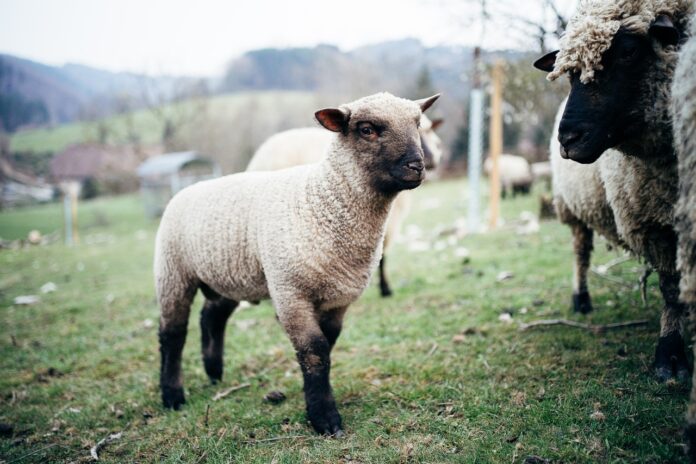When I first started getting serious about raising sheep, I knew I wanted a fiber flock. I’d been a knitter for years and had spent enough time drooling over yarn in specialty yarn shops to know how surprisingly versatile and engaging different types of wool can be. More importantly, however, I’d realized after falling in love with my first bum lambs that raising sheep to be sold primarily for meat was not going to work for my very tender heart.
Consequently, over the last 12 years I’ve raised a lot of random breeds of sheep, many of which I’m pretty sure only a few shepherds in South Dakota even know exist. Each breed has had its good points, and its difficulties. Most recently, I tried using an Icelandic ram–a breed that is very popular right now as a ‘homestead’ sheep for its hardiness, lamb vitality, and general disposition. I wanted to love him, but I just didn’t, mostly because Icelandics are “dual-coated” and their wool can be challenging to work with as a result.
A few weeks ago, starting to plan for the year of shepherding ahead, I once again forced myself to take stock of my goals for the flock. “The perfect breed of sheep doesn’t exist!” I kept telling myself. “Adjust your expectations!”
And then I happened across a description of Clun Forest sheep on the Livestock Conservancy’s Instagram account. (Thank you, Algorithm, for finally finding something useful to show me!) The breed takes its name from the ancient market town of Clun in the southwest corner of Shropshire, England. Some believe that the original Cluns were bred by the shepherds who lived there around a thousand years ago.
That romantic description immediately had me hooked, and then I started reading the description of the actual sheep: “Clun forest ewes weigh 130-160 lbs. and rams 175-200 lbs. They have small, upright ears that give them a very alert appearance, and their black hooves rarely need trimming. Ewes are good mothers…Rams tend to be ‘gentlemen’ with their shepherds…The wool is dense, uniform in quality, and is suitable for both beginning and expert fiber artisans. Clun Forest wool cannot be wet-felted.
The sheep are alert and active in disposition, but good-natured and easy to handle. They are worm-resistant. This triple-purpose [milk, wool and meat] breed’s characteristics make it a natural choice for grass-based production, as they are easy keepers and excellent producers, and are a good choice for novice to intermediate farmers.”
The more I researched them, the more enamored I became. They really sounded too good to be true. I mean, if I wrote down my every desire for a sheep I would word-for-word be describing a Clun. But as an endangered breed, what were the chances I’d be able to find any anywhere near me?
Mini-miracles abound, my friends…I googled “Clun Sheep” and “South Dakota,” and the only thing that matched the search was the website of a farm on the eastern side of the state. I wrote an email to the address listed, and was shocked when it turned out they needed to downsize their flock of Cluns. And that’s how I ended up spending two days last week driving across the state of South Dakota to pick up nine beautiful, bred ewes.
Not going to lie, driving with a trailer is NOT my favorite thing, and doing it with such precious cargo was even more stressful. Plus, I turned the six-hour drive there into an eight-hour drive by getting lost on the way…and then the six-hour drive home into a nearly nine-hour drive by having to get un-lost and then avoiding the interstate and then driving really, really slowly because it was after dark and I didn’t want to hit a deer. So. I’m not going to begin a livestock hauling business any time soon, but I am SO thankful to have these ladies here with us, and having a somewhat harrowing adventure in the name of love is good for the soul from time to time.














Hi Eliza!
I just discovered Clun Sheep tonight and they are apparently “the Jersey cow of sheep”. Unfortunately I can’t find any for sale anywhere near Oklahoma. I might have to drive a long way but I am certain this is the breed I need. What was the name of the farm you purchased from and if you don’t mind sharing how much you paid. I probably want to start with two or three as I am completely new to raising sheep.
I am also interested in their wool but I lack the experience you have with it.
Thank you for sharing your experience!